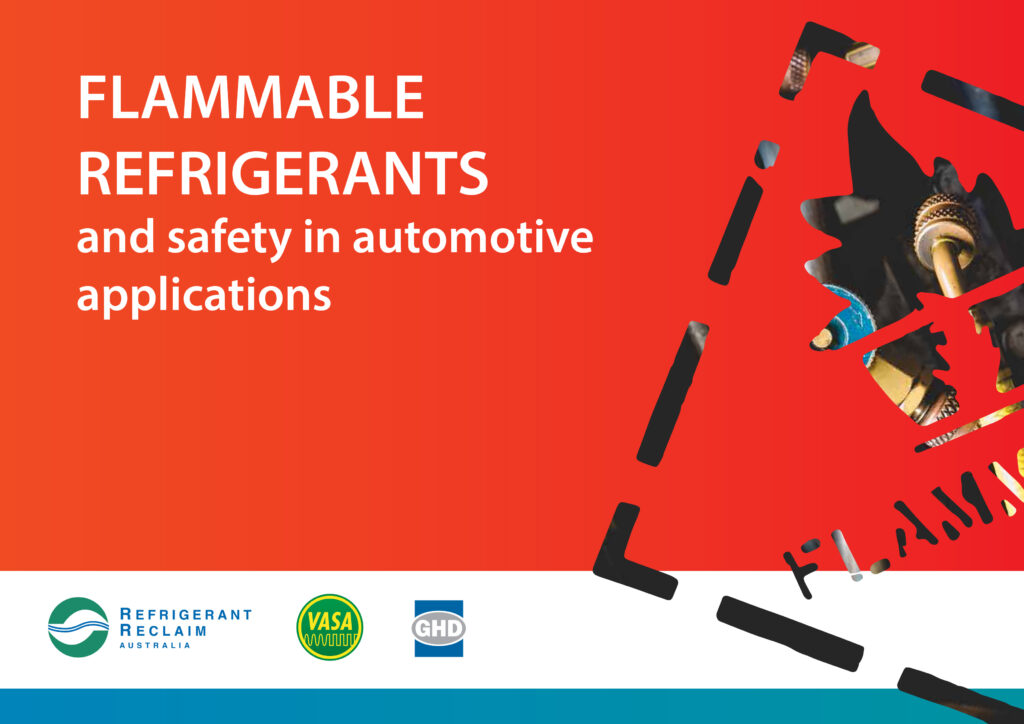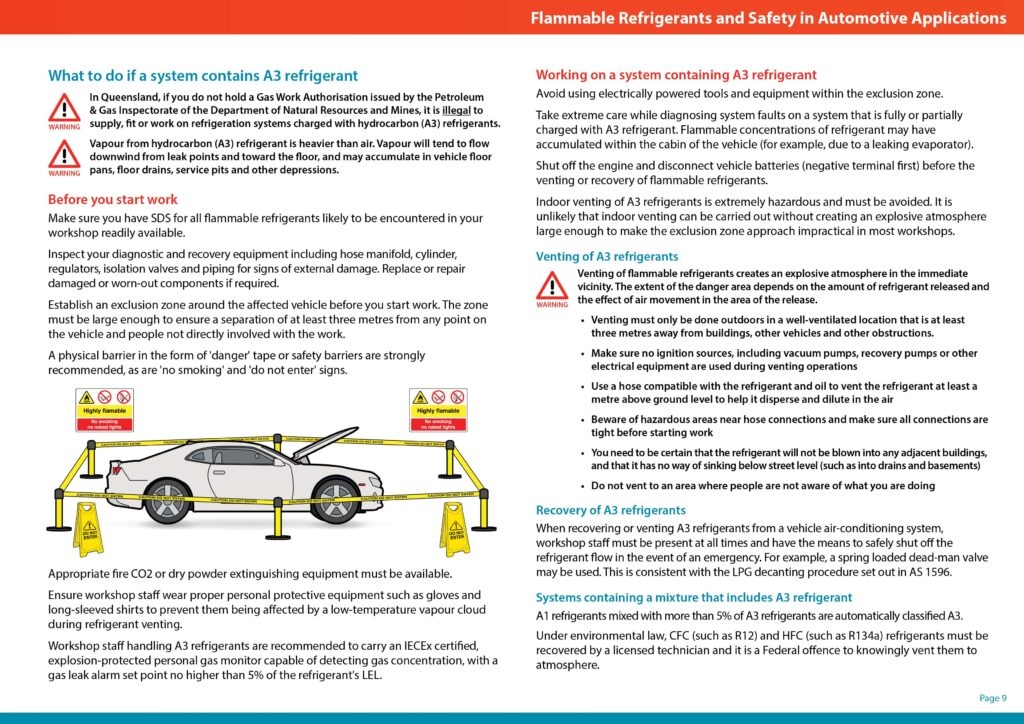NEWS RELEASE: Automotive flammable refrigerants safety guide
- PostedPublished 19 November 2019

NEWS RELEASE
For immediate release: Tuesday, November 19, 2019
Ground-breaking Australian research behind new automotive flammable refrigerants safety guide
World-first study results in free guide to help automotive technicians work safely with flammable refrigerants
GOLD COAST, AUSTRALIA: A new guide on how to work safely on vehicles where it is known or suspected that flammable refrigerants may be present is now available for free download.
The document is the result of a ground-breaking project between Refrigerant Reclaim Australia, automotive thermal and electrical trade association VASA and GHD Engineering, to study the management of health and safety risks associated with the use of flammable gases, including refrigerants, in an automotive workshop environment.
It covers topics including legal matters related to refrigerant classifications, dangerous goods, work health and safety, hazardous areas and working with flammable refrigerants, including what to do if a system contains a flammable refrigerant classified A3 (high flammability) or A2L (mild flammability).
Handling mixtures of non-flammable and flammable refrigerants is also covered.
At the end of the document are a workshop safety checklist and risk assessment worksheet to use when flammable refrigerants are encountered.
During the early research stage of this project, it became clear to GHD Engineering that it would have to conduct a series of world-first studies to establish the number of vehicles containing flammable refrigerant that can occupy a workshop and safe exclusion zones for venting and vacuum pumping of A3 and A2L refrigerants, or in a hose leak scenario.
The project could not have been completed without the assistance of Queensland-based VASA member workshops Gympie Auto Air, Mr Cool and SuperCool Southport.
VASA President Ian Stangroome said: “Since 2013, car manufacturers have been switching to more environmentally friendly A2L-rated mild-flammability refrigerants in new models that leave the factory with air-conditioning systems properly engineered to minimise any flammability-related risks.
“An issue that has emerged in recent years is the charging of A3-rated high-flammability refrigerants into existing automotive air-conditioning systems that were never designed to mitigate these elevated risks, in some cases without proper labelling.
“There has until now been no properly researched advice on the safest way to work with vehicles using flammable refrigerants – especially those which have been retrofitted – from a practical, OH&S and legal point of view.
“We are very proud to be publishing this rigorously researched safety guide for the benefit of all automotive technicians in Australia, who will at some point inevitably encounter a vehicle charged with flammable refrigerant.”
Automotive technicians, service advisors and workshop managers are invited to download Flammable Refrigerants and Safety in Automotive Applications for free.
Click the below images for hi-res versions:

- CategoriesIn Latest News
- TagsFlammable refrigerants





